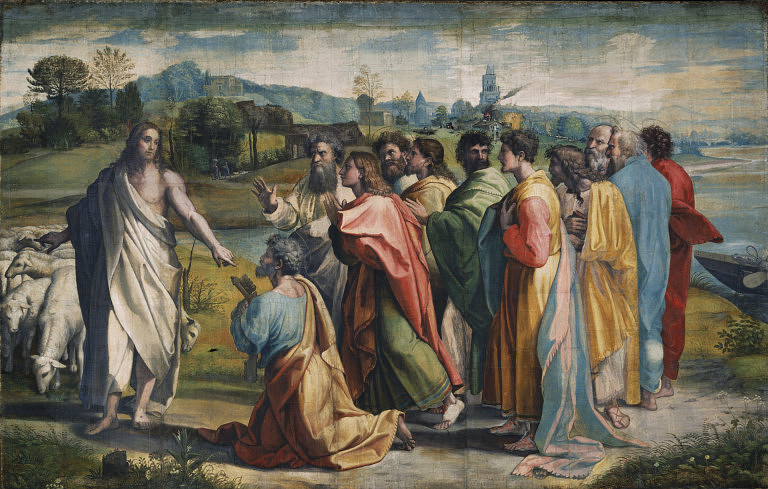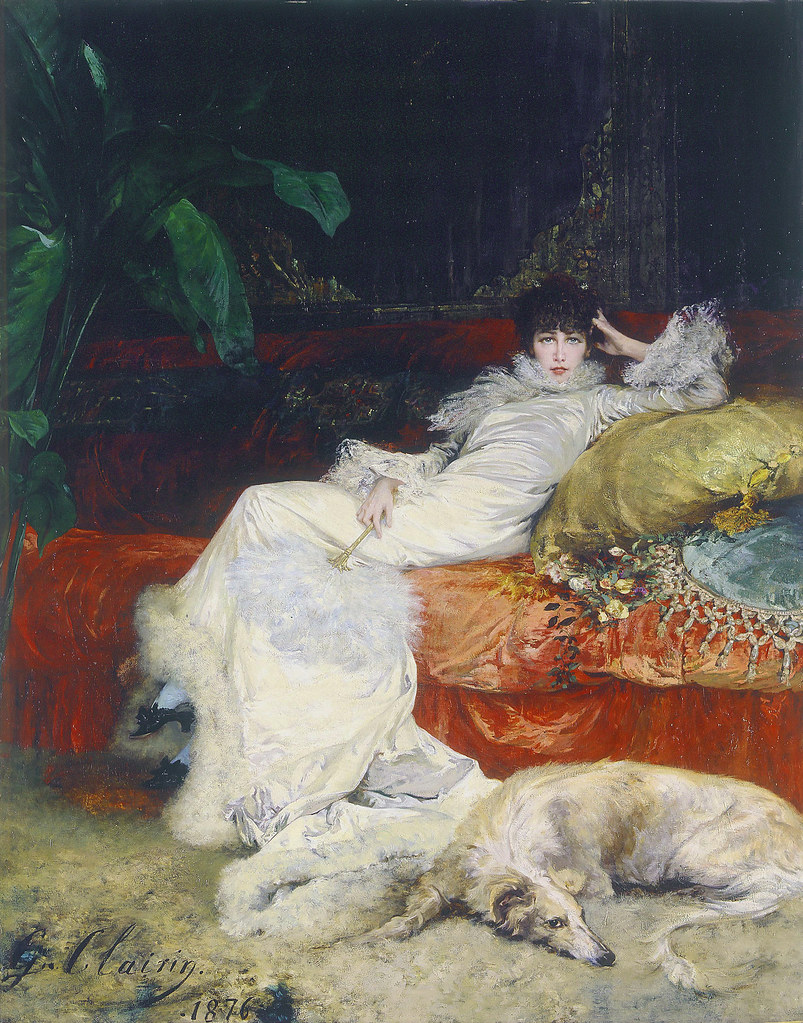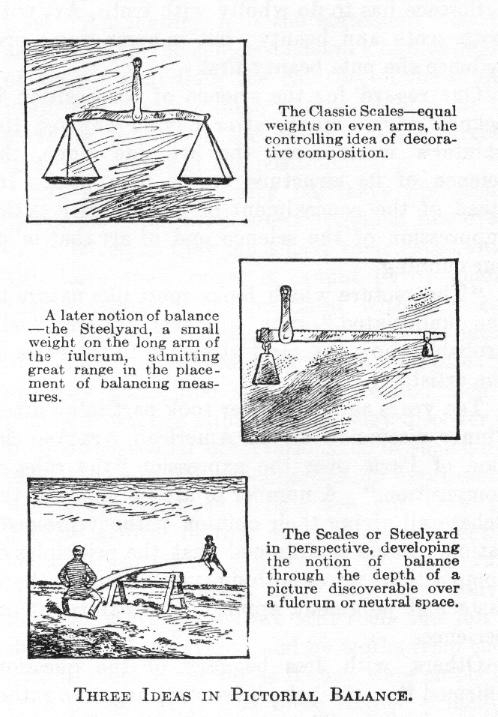This book, Pictorial Composition and the Critical Judgment of Pictures, by Henry Rankin Poore and written in 1903 is one of the most brilliantly written books I have come across. It is a subject about which many artists lack knowledge and thus struggle with their work, simply because it was information they were never taught. Originally written, as many books from that time were, with a more eloquent and decorative speech, something many folks may find difficult to wade through. I will be attempting to translate the dialogue in the book into something you may find easier to read – hopefully without losing too much in the translation. It is a book you can find on-line or as an E-book. Some of the pictures he references in the book I will try to re-source since the scans of the original may be suboptimal.
CHAPTER XI – THE PLACE OF PHOTOGRAPHY IN FINE ART
Note: I am going to place this here exactly as it is written since it is deals with something I have rather strong feelings about. Few photographers have studied the principles which we have been looking at, and therefore I find the vast majority of photographs to be sophomoric at best. When done well however, a photograph can certainly be artistic.
Since the time that photography laid its claim to be reckoned among the fine arts the attention of artists has been attracted first by the claim and thereafter, with acknowledgments, to the performance.
The art cry of the newly baptized had the vehement ring of faith and determination. Like the prophecy of the embryo premier it sounded: “My lords, you will hear me yet.”
The sustained interest of the “Photographic Salon” and the utterance of its exhibitors in the language of art, has long since obtained concession to the claim for associate membership. To make this relationship complete became the effort of many writers of the photographic circle. “The whole point then,” writes Prof. P. H. Emerson, B. A., M. D., of England, “is that what the painter strives to do is to render, by any means in his power, as true an impression of any picture which he wishes to express as possible. photographic artist strives for the same end and in two points only does he fall short of the painter—in color and in the ability to render so accurately the relative values, although this is to a great extent compensated by the tone of the picture. How then is photography superior to etching, wood-cutting, charcoal drawing? The drawing of the lens is not to be equaled by any man. There is ample room for selection, judgment and posing, and, in a word, in capable hands a finished photograph is a work of art. Thus we see that the art has at last found a scientific basis and can be rationally discussed, and I think I am right in saying that I was the first to base the claims of photography as a fine art on these grounds and I venture to predict that the day will come when photographs will be admitted to hang on the walls of the Royal Academy.”
Since the appearance of the above which comes as close to the real reason in question as its logic might intimate, but which is worth quoting from the prophecy which it contained, there have been many expressions of opinions by photographers. None, however, are more to the point than the following from the pen of Mr. F. H. Wilson: “When, fifty years ago, the new baby, photography, was born, Science and Art stood together over her cradle questioning what they might expect of her, wondering what place she would take among their other children. Science soon found that she had come with her hands full of gifts and her bounty to astronomy, microscopy and chemistry made her name blessed among these, her elder sisters. Art, always more conservative, hung back. But slowly jealous Art who first frowned and called the rest of her brood around her, away from the parvenue, (social climber, upstart, or non-entity) has let her come near, has taken her hand, and is looking her over with questioning eyes. Soon, without doubt, she will have her on her lap with the rest.”
“Why has she been kept out so long? Almost from the beginning she claimed a place in the house beautiful of art. In spite of rebuffs she knocked at its doors, though the portrait painter and the critic flung stones at her from the house-top, and the law itself stood at the threshold denying her entrance. Those early efforts were not untinctured with a fear that if she should get in she would run the establishment, but the law long since owned her right, and instead of the crashing boulders of artistic dislike and critical indignation the volleys they drop at her feet now are mere mossy pebbles flung by similarly mossy critics or artist-bigots. Still, the world at large hears them rattle and does not give her the place and estimation she has won.”
“Art began with the first touch of man to shape things toward his ideal, be that ideal an agreeable composition, or the loftiest conception of genius. The higher it is the more it is art. Art is head-and-hand work and a creation deserves the name of art according to the quality and quantity of this expended on it.
Simply sit down squarely before a thing and imitate it as an ox would if an ox could draw, with no thought or intention save imitation and the result will cry from every line, ‘I am not art but machine work,’ though its technique be perfection. Toil over arrangement and meditate over view-point and light, and though the result be the rudest, it will bear the impress of thought and of art. I tell you art begins when man with thought, forming a standard of beauty, commences to shape the raw material toward
it. In pure landscape, where modification is limited, it begins when the artist takes one standpoint in preference to another. In figure composition, where modification is infinite, it begins with the first touch to bring the model into pose. When he bends a twig or turns a fold of drapery the spirit of art has come and is stirring within him. What matters the process! Surely it is time that this artistic bigotry was ended.”
The kernel lies in the sentence “when he bends a twig,” etc. “the spirit of art has come.” In other words when he exhibits choice and preference, when, in short, he composes. Recognizing that composition was the only portal through which the new candidate for art recognition could gain an entrance into the circle of Art, the single effort of the past photographer, viz.; the striving for detail and sharpness of line, has been relegated to its reasonable place. A comprehension of composition was found to demand the knowledge of a score of things which then by necessity were rapidly discovered, applied and installed. Composition means sacrifice, gradation, concentration, accent, obliteration, replacement, construction of things the plate does not have, destruction of what it should not have.
Supplied with such a magician’s wand no effect was denied: all things seemed possible.
Gratified by recognition in a new realm the new associations should be strengthened. Whereas photography had been spanned by the simple compass of Mr. and Mrs. A. and their daughter, in figures; or topographical accuracies in landscape, revelers in the new art talked of Rembrandt and Titian, Corot and Diaz. To do something which should put their art in touch with these, their new-found brethren, was the thing! A noble ambition, but only a mistaking of the effect for the cause. These men composed. The blurred outline, the vacant shadow, the suppressed corners, the clipped edges. This all means composition in the subduing of insistent outline, in the exchange of breadth for detail, in the centralization of light, in the suppression of the unnecessary.
But no, the employment of these devices of the painter from the photographer’s point of view of composition is not sufficient. Photography is now busy complimenting every school of painting under the sun. Yesterday it was Rembrandt’s school. Now that is passed, and Carrière is better and tomorrow, perchance, it will be Raphael or Whistler or some Japanese, why not?
The one and only good sign which marks imitation is that it shows appreciation, and this of the standards is a good thing. Let each have its turn. Their synthesis may be you.
But to a man of the professions or business whose time for study in these vast fields of the classics is so disproportionate to their extent and who, though supplied with search warrants and summons, still fails to make a capture, how ineffectual and wearying this chase after ideals—subjective. Why not shorten your course? Why not produce Rembrandts and Corots because you apprehend the principles on which they work and anticipate a surprise in discovering, as by chance, that you have produced something which recalls them. In this way and by these means there will be meaning in your claim of brotherhood.
One may scarcely call an estimate in art matters complete without an opinion from Mr. Ruskin. “In art we look for a record of man’s thought and power, but photography gives that only in quite a secondary degree. Every touch of a great painting is instinct with feeling, but howsoever carefully the objects of
a picture be chosen and grouped by the photographer, there his interference ends. It is not a mere matter of color or no color, but of Invention and Design, of Feeling and Imagination. Photography is a matter of ingenuity: Art of genius.”
On these lines however the philosopher of Coniston hardly proves his case.
Invention and design, feeling and imagination, are all a part of the photographer’s suite. He employs them all. And these too are qualities the most artistic. Technique, which is manual and not spiritual, is the one point at which art and photography cannot coalesce. To Art’s sentient finger-tips, Photography holds
up only steel, wood and glass. Art therefore holds the winning cards.
P. G. Hamerton, England’s safest and surest critic of art, writing a generation ago on the “Relation between Photography and Painting,” says: “But all good painting, however literal, however pre-Raphaelite or topographic, is full of human feeling and emotion. If it has no other feeling in it than love or admiration for the place depicted, that is much already, quite enough to carry the picture out of the range of photography into the regions of real art.”
“And this is the reason why good painting cannot be based on photography. I find photographic data of less value than hasty sketches. The photograph renders the form truly, no doubt, as far as it goes, but it by no means renders feelings and is therefore of no practical use (save for reference) to a painter who feels habitually and never works, without emotion.”
It is very much to be questioned if Mr. Hamerton in the face of what has since been done with the camera by men who feel and are led by the emotional in art, would claim a distinction to the painter and deny that the photographic product was unaffected by the emotional temperament.
A friend shows us a group of his pets, either dogs, horses or children, done by an “artist photographer.” We find it strongly composed, evincing a clear knowledge of every point to be observed in extracting from the subject all the picturesqueness there was in it. We notice a soft painter-like touch, shadows not detailed—simply graded—aerial envelopment everywhere suggested.
It would be pedantry (excessive concern with minor details and rules) for the painter to correct the expression of his friend and suggest that the man who produced the picture was not an artist. It is the product of a man who felt exactly as an artist would have felt; an expression of views upon a subject entirely governed by the principles of art, and the man who made it, by that sympathy which he exhibits with those principles, is my brother in art to a greater degree than the painter who, with youthful arrogance, throws these to the winds “mistaking,” as has been cleverly said, “the will-o’-the-wisp of eccentricity for the miracle working impulse of genius.” In whatsoever degree more of the man and less of the mechanics appear, in that degree is the result a work of art.
The reliance of photography on composition has provoked an earnest search for its principles. The photographer felt safe in going to the school of painting for these principles and accepted without question the best book written for painters, that by John Burnet, penned more than a century ago at a time when the art of England was at a low imitative ebb, and unduly influenced by imitation. This has been abundantly quoted by photographic teachers and evidently accepted, with little challenge, as final.
The best things, discoverable to the writer, in the field of composition, have been by the photographers themselves—the best things as well as the most inane; but in the face of so many results that earnest workers with the camera produce and continue to put forth, which cannot find a place in the categories of Art, it would seem that these preachments have been unheeded, or were not sufficiently clear to afford practical guidance for whom they were intended.
Mr. P. H. Robinson declares most strenuously for composition.
“It is my contention,” he says, “that one of the first things an artist should learn is the construction of a picture.”
On a par with this is the opinion of Mr. Arthur Dow, the artist, who declares that “art education should begin at composition.”
It is for lack of this that the searcher for the picturesque so frequently returns empty handed.


















 The portrait of Sarah Bernhardt, an excellent composition from many points of view, finds its most apparent balance on either side of the sinuous line of light through the center. This painting is exhibiting the axis, which many pictures show in varying degrees. The opposing corners are well balanced, the plant on one side of the axis versus the dog on the other side of the axis, with a trifle too much importance left to the dog. Place a finger over the head and forelegs of the dog, taking this much off and the whole composition gains, not only because the diagonal corners then balance, but because the heads of both woman and dog are too important for the same side of the picture.
The portrait of Sarah Bernhardt, an excellent composition from many points of view, finds its most apparent balance on either side of the sinuous line of light through the center. This painting is exhibiting the axis, which many pictures show in varying degrees. The opposing corners are well balanced, the plant on one side of the axis versus the dog on the other side of the axis, with a trifle too much importance left to the dog. Place a finger over the head and forelegs of the dog, taking this much off and the whole composition gains, not only because the diagonal corners then balance, but because the heads of both woman and dog are too important for the same side of the picture.

